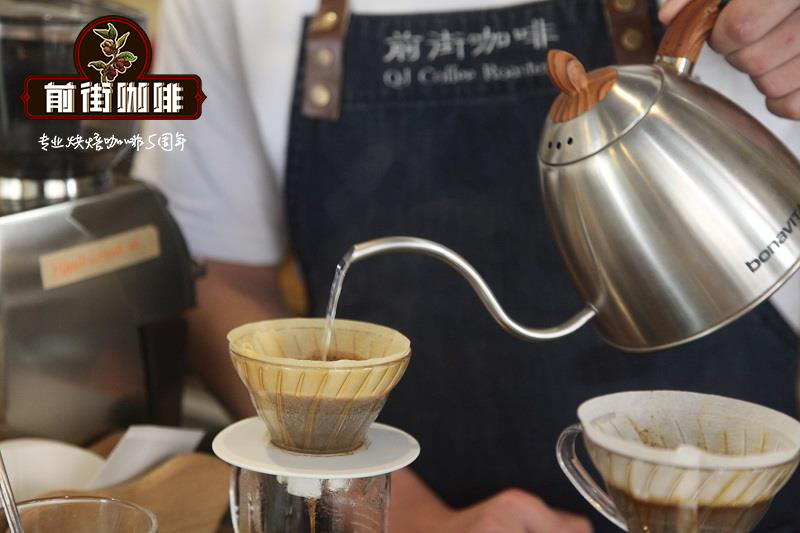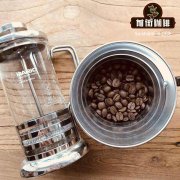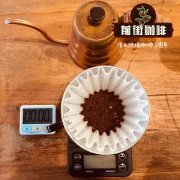Hand-brewing coffee skills-teach you "simple and rough" to make coffee, Sidamo Sakuran brewing method

Professional coffee knowledge exchange more coffee bean information please follow the coffee workshop (Wechat official account cafe_style)
When it comes to the oil in coffee, what do you think of?
Generally speaking, the first impression should be the large layer of "Crema" floating above the Italian concentrate. It is often said that that layer of Crema is an important source of aroma and taste, but there is a sentence in the Coffee equation of Taguchi:
"in my experience, removing the bubble ESPRESSO can greatly reduce the unpleasant taste."
-- Danbu Xingbo
As far as ESPRESSO is concerned, there is nothing wrong with the saying that "Crema is a very important source of aroma". It has to be said that the aroma and impact of ESPRESSO without foam is not as good as that of normal ESPRESSO.
But!!!
Skimming off the ESPRESSO of Crema, it does greatly improve the ease of entrance, makes people feel clearer in the mouth, and does not have the strong sting bitterness and miscellaneous feeling of the general ESPRESSO entrance.
We must first know that the Japanese are very sensitive to "irritation" and "astringency" in their sense of taste. what they care about is the "taste" in their mouths, not the "aroma" when they get close to their noses. So although Crema foam can retain many aromas that are easy to spread during extraction, it does not add much to the taste preference of the Japanese. Instead, Mr. Dan analyzed a high concentration of caffeic acid, chlorogenic acid and other substances from the foam, which will bring astringency to the senses.
So if we put our hands on it, should it have the same effect?
Coffee in the process of extraction will occur the so-called "emulsification" role, if the extraction method is appropriate, the emulsified oil-water mixture shows a "oil-water" state, oil can also retain a large number of water-soluble but highly fugitive flavor. However, causing "astringency" and "throat-biting bitterness" and even "burning taste" are unfortunately fat-soluble substances, although coffee fat is good for flavor, it is by no means the more the better.
In coffee, if there is less oil, it will cause a thin taste, but allowing too much emulsified oil into the coffee liquid will also cause a bad flavor. Therefore, how to balance the taste and flavor of oil extraction point through proper extraction is also a knowledge, and it is also the most difficult to adjust the so-called "parameters" to control. Oil brings coffee with sweetness, taste and mellow aroma. There must be fat, or it may have the same amount of lactose as a cup of skim milk, but there is a considerable difference in sweetness between nonfat and full fat. But another certainty is that if the oil is allowed into the coffee liquid without control, there will of course be the smell caused by improper extraction.
To this end, the editor thought of a very "simple and rough" method-the use of fine powder.
The reason why Italian concentration is rich in oil and rich flavor, very fine ground coffee powder is one of the keys. When coffee beans are ground finely, the area of contact with hot water will be greatly increased, so that the oil in coffee cells can be easily released and wrapped in water-soluble flavor substances. Excessive lipids can also be accompanied by impurities to make coffee cloudy. Filter paper can absorb oil to a certain extent, but it is obviously not possible to grind coffee powder into Italian thickness for hand flushing, so we added another tool: French kettle for coarse filtration.
The utensils used are as follows: French kettle, mixing rod, V60 filter cup & filter paper, sharing pot
First of all, it is called good coffee beans, this is a coffee that won the championship of Ethiopia's TOH (the Taste Of Harvest) in 2017-Sakui, and today it uses Sunshine Sakui 2.0 of the new production season in 2018, which comes from the mountain spring treatment plant in the core production area of Humbera. For more information about Sakuran, you can take a look at this: the Story of Sakuran. Sakuran 2.0, Ethiopia, Sida Mohambela, Ethiopia, during the new 18-year production season.
Boil the water and prepare the mixing rod, French kettle, V60 filter cup filter paper and sharing pot.
Gouache ratio at 1:14, water boil, grinding, grinding using Italian concentration of the same thickness.
Pour freshly boiled hot water into the kettle, pour in the coffee powder, stir immediately with a stirring stick for 10 seconds, cover and soak for 20 seconds.
Break the slag under the pressure (because the fine powder requires a lot of strength), pour into the filter cup to filter the very fine powder and absorb part of the oil, and then complete!
We make use of the characteristics of high extraction rate of fine powder and fast release of flavor, together with stirring and legal pressure, we can extract flavor and oil in a short time, strengthen the aroma and alcohol thickness of Huakui, and filter through filter paper. very fine powder, oil and impurities will be absorbed and isolated.
A cup of hand-brewed coffee made in this way, with complete flavor and long-lasting aftertaste, is very sweet and clean, even if it is completely cold, it will not be cloudy. The point is that it does not require any means to make a good cup of coffee!
The above operations are suitable for almost any type of coffee beans except deep-roasted coffee, and the grinding degree and water temperature do not need to be adjusted. For medium-deep roasted coffee, you only need to shorten the stirring or soaking time by a few seconds. In addition, if you feel that the taste of the coffee is too strong, the gouache ratio can be adjusted to 1:15.
Important Notice :
前街咖啡 FrontStreet Coffee has moved to new addredd:
FrontStreet Coffee Address: 315,Donghua East Road,GuangZhou
Tel:020 38364473
- Prev

Is it healthier to drink decaf coffee? What is decaf coffee? The advantages of decaf coffee and
Professional coffee knowledge exchange more coffee bean information Please follow the coffee workshop (Wechat official account cafe_style) are you worried about palpitations, insomnia, or switch to decaf coffee because of pregnancy? When drinking coffee, you want to consume less caffeine, which is actually similar to the variety of coffee beans and the size of grinding particles.
- Next

Hand brewed coffee tips---how to express coffee flavor yejia sherry orchard how to brew
Professional coffee knowledge exchange More coffee bean information Please pay attention to coffee workshop (Weixin Official Accounts cafe_style) Before the small editor and everyone discussed the so-called coffee out of different flavors is actually unrealistic, today small editor continue to discuss with you the extraction of various flavors in hand-brewed coffee, see how to use the method to systematically combine the coffee you want to present
Related
- Beginners will see the "Coffee pull flower" guide!
- What is the difference between ice blog purified milk and ordinary milk coffee?
- Why is the Philippines the largest producer of crops in Liberia?
- For coffee extraction, should the fine powder be retained?
- How does extracted espresso fill pressed powder? How much strength does it take to press the powder?
- How to make jasmine cold extract coffee? Is the jasmine + latte good?
- Will this little toy really make the coffee taste better? How does Lily Drip affect coffee extraction?
- Will the action of slapping the filter cup also affect coffee extraction?
- What's the difference between powder-to-water ratio and powder-to-liquid ratio?
- What is the Ethiopian local species? What does it have to do with Heirloom native species?

